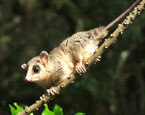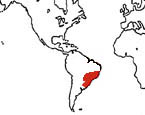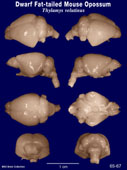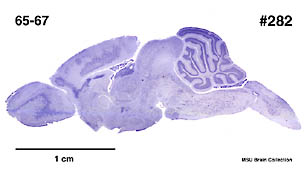|
Dwarf
Fat-tailed Mouse Opossum
(Thylamys velutinus) #65-67 |
||||
|
|
Physical
characteristics and distribution
|
| Generally,
there is a great deal of variation of size, coloration and other
details within the genus. Head and body length ranges are from
85-185 mm, tail lengths 90-280 mm. Coloration is also variable,
but almost all species have brown or black markings around the
eyes. The pelage is mostly short and velvety, and the tail is
strongly prehensile.
They have no pouch, and depending
on the species have 9-19 mammae which are abdominal. Some may
also have pectoral mammae. They are primarily forest dwellers, with ranges from seal level to about 3,400 meters. They are mostly nocturnal and arboreal, building nests of leaves and twigs in trees or abandoned bird’s nests. Banana plantations are a favorite habitat of this genus. Their diet consist mostly of insects and fruits but may also include small lizards, rodents and birds' eggs. T. velutinus are found in SE Brazil. |
|
Description
of the brain
|
|
The brain weight is .767 g. The brain meaurements are: Length AP left 9.9 mm; Length AP right 9.9 mm; Bitemporal width 11.8 mm; Temporal height left 8.2 mm; Temporal height right 8.2 mm. |
|
Animal
source and preparation
|
|
All
specimens collected followed the same preparation
and histological procedure.
|
Other Related Resources (websites and publications)



